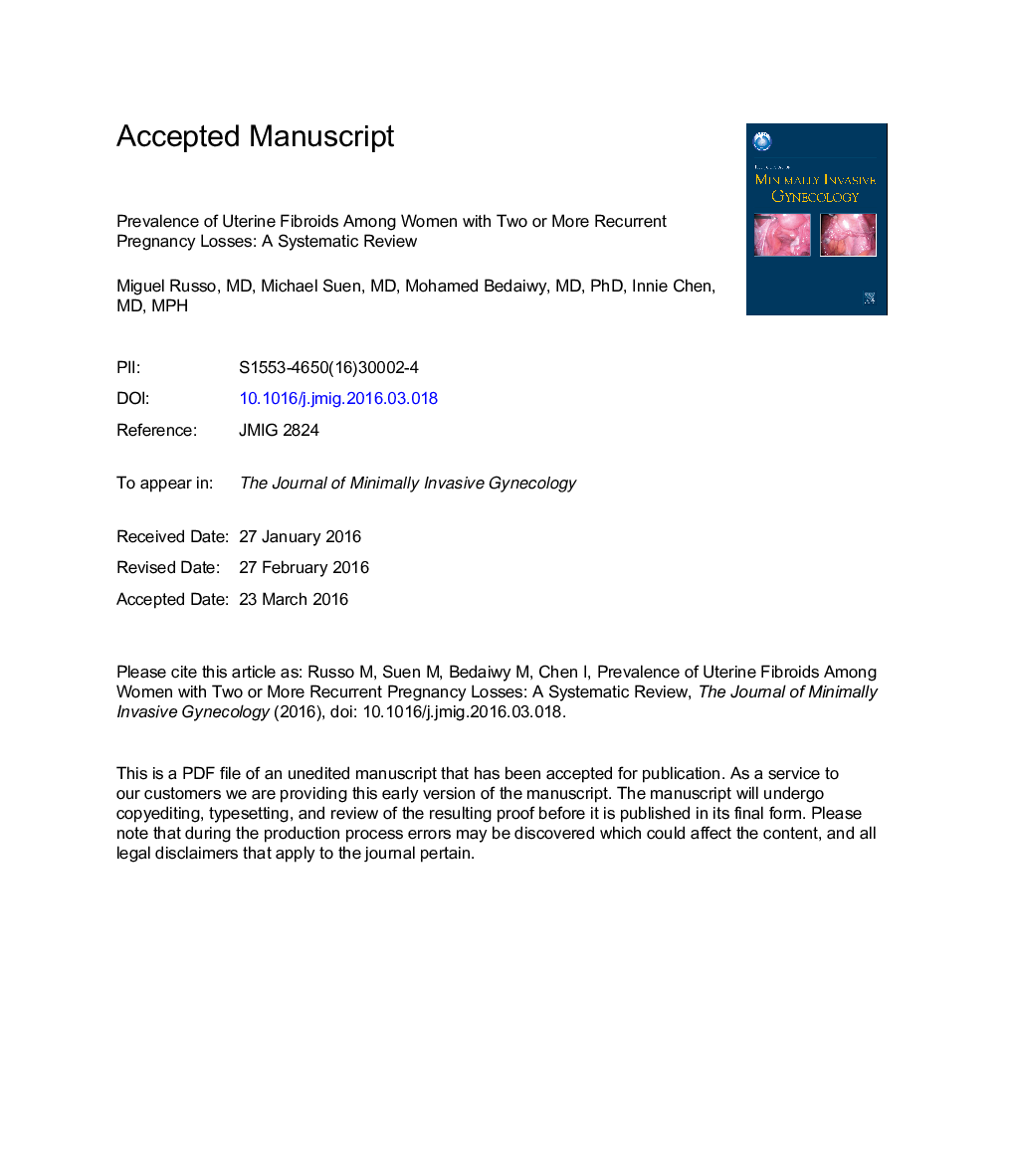| Article ID | Journal | Published Year | Pages | File Type |
|---|---|---|---|---|
| 3961573 | Journal of Minimally Invasive Gynecology | 2016 | 19 Pages |
Abstract
Recurrent pregnancy loss (RPL), defined as 2 or more failed clinical pregnancies, affects approximately 5% of reproductive women. Several etiologies for RPL have been studied including uterine myomas. However, the effect of uterine myomas on pregnancy outcomes in this patient population remains unclear. The purpose of this systematic review was to critically appraise the evidence associating uterine myomas with RPL and quantify the prevalence of uterine myomas in this patient population. The inclusion criteria included women of reproductive age with at least 2 or more recurrent, failed clinical pregnancies found to have a submucosal and/or intramural myoma distorting the uterine cavity on a hysterosalpingogram, a saline infusion sonogram, and/or hysteroscopy. Studies with biochemical pregnancies; molar, ectopic, and pregnancies of unknown location; pregnancies conceived with assisted-reproductive technologies; therapeutic abortions; subserosal myomas and intramural myomas not distorting the uterine cavity; studies using only 2-dimensional pelvic ultrasound; or studies in which no additional workup for RPL was initiated or in which multiple etiologies were included were omitted from this review. Risk of bias and quality assessment were conducted using the Quality Assessment Tool for Observational Cohort and Cross-sectional studies published by the National Institutes of Health. The electronic search yielded 934 citations. After title, abstract, and full-text screening, 3 studies had met the pre-established inclusion/exclusion criteria and were included in the review. The prevalence of submucosal and cavity-distorting myomas in women with 2 or more pregnancy losses was found to be 4.08% (29/711). The prevalence of uterine myomas was highest in women with 3 or more RPLs (5.91% [28/473]). No studies with a proper control group were identified. In summary, the association between uterine myomas and RPL remains unclear. High-quality studies are required to assert the impact of uterine myomas on pregnancy outcomes in this patient population. Patients with RPL and uterine myomas should be properly counseled regarding the existing evidence before surgical consideration.
Related Topics
Health Sciences
Medicine and Dentistry
Obstetrics, Gynecology and Women's Health
Authors
Miguel MD, Michael MD, Mohamed MD, PhD, Innie MD, MPH,
